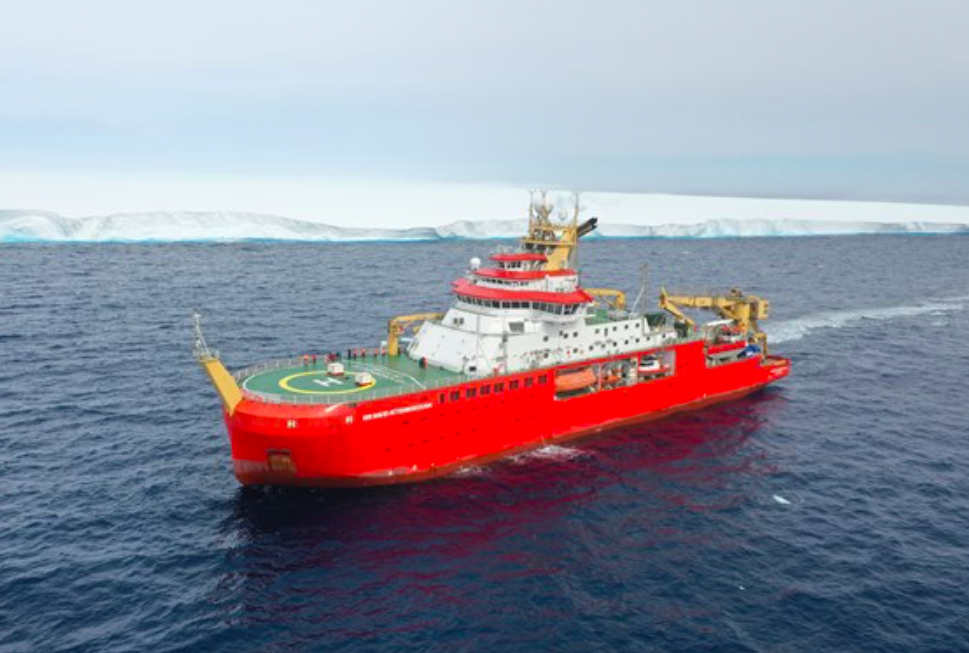
World’s largest iceberg runs aground near South Georgia

The world’s largest iceberg, known as A23a, has run aground on the continental shelf of South Georgia, around 90 kilometres from the remote sub-Antarctic island.
The iceberg, which is more than twice the size of Greater London and weighs nearly one trillion tonnes, broke off from Antarctica’s Filchner–Ronne Ice Shelf in 1986 but remained grounded for over 30 years before beginning its slow drift north in 2020.
British Antarctic Survey (BAS) oceanographer Dr Andrew Meijers describes A23a as a “towering wall emerging from the ocean, stretching from horizon to horizon,” adding that some portions of the iceberg had already been “pitted and undercut by the action of waves and melt.”
Although icebergs of this size are uncommon, they are not unheard of. “There have been two other similarly sized bergs in the same region over the past five years or so,” Meijers says. A23a has been closely monitored since 2020, particularly after it moved into the wider Southern Ocean in 2023.
South Georgia is home to large populations of penguins and seals, and previous iceberg groundings have disrupted feeding patterns by forcing animals to travel greater distances for food. However, Meijers says A23a is unlikely to significantly impact local wildlife. “Potentially, it could interrupt their pathway to feeding sites and force the adults to expend more energy to travel around it,” he explains. “This could reduce the amount of food coming back to pups and chicks on the island and so increase mortality.”
At the same time, the iceberg’s gradual melting could benefit marine ecosystems by releasing nutrients into the ocean, potentially triggering increased biological productivity. “If the iceberg is stimulating ocean productivity, this could actually boost populations of local predators like seals and penguins,” Meijers says.
BAS researchers are currently studying how the iceberg is influencing ocean conditions. “We took samples around A23a in December 2023 to investigate the impact of the iceberg’s passage on biogeochemistry,” Meijers says. These studies include examining nutrient concentrations and the effect on phytoplankton, which could play a role in carbon sequestration.
A23a: The world’s biggest iceberg
A23a remains largely intact, although it has begun showing signs of wear. “Instead of a big, sheer pristine box of ice, you can see caverns under the edges,” Meijers says. “Now it’s grounded, it is even more likely to break up due to the increased stresses, but this is practically impossible to predict.”
As the iceberg fragments, smaller chunks could create navigational challenges for fishing vessels. “As it breaks up over time, the smaller bergs are much harder to track,” Meijers says. While its current size makes it easy to avoid, “past large bergs have made some regions more or less off-limits for fishing operations for some time due to the number of smaller—yet often more dangerous—’bergy bits’.”

The huge A23a iceberg was captured and sampled by researchers on the RRS Sir David Attenborough in December 2023. Image courtesy of Theresa Gossman, British Antarctic Survey.
Links to climate change
Iceberg calving is a natural process, but researchers are studying how climate change may be accelerating ice loss. “Observations show that the ice shelves have lost around 6,000 billion tonnes of their mass since the year 2000,” Meijers says. “This aligns with a measured mass loss of the grounded ice over Antarctica—attributed to anthropogenic climate change.”
Scientists are particularly concerned about the impact of melting icebergs on ocean circulation and rising sea levels. “The loss of ice shelf mass has significant implications, including the addition of freshwater, acceleration of sea level rise and possible irreversible ‘tipping points,’ particularly in the vulnerable West Antarctic,” Meijers says.

Graphic showing the route the A23a iceberg has taken since 17 January 2025. It has been static since 1 March. Image courtesy of the Mapping and Geographic Information Centre, British Antarctic Survey.
For now, researchers will continue tracking the world’s largest iceberg – A23a – and its progress, monitoring its impact on marine ecosystems and assessing what its slow disintegration could reveal about broader changes in the Southern Ocean.
In 2020, a reconnaissance mission flew over iceberg A68a, similarly expected to cause disruption (although it eventually broke into small chunks). The iceberg was the largest remaining section of A68, which calved off the Larsen C ice shelf on the Antarctic Peninsula in July 2017. Its sheer size meant it was impossible to capture in a single photograph.
In 2022, a Norwegian cruise ship cancelled its nine-night trip through Alaska, after the vessel crashed into an iceberg off the Alaskan coast. The incident happened near the Hubbard Glacier in Yakutat Bay.
The post World’s largest iceberg runs aground near South Georgia appeared first on Marine Industry News.

